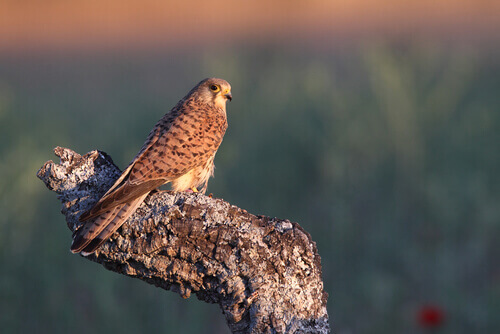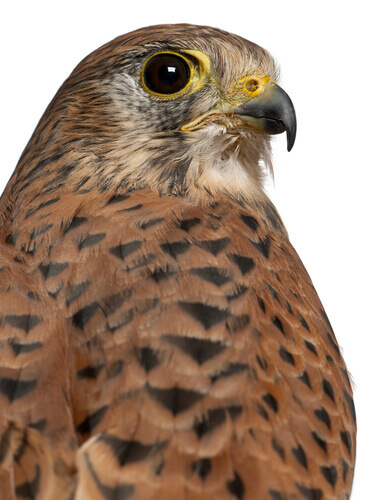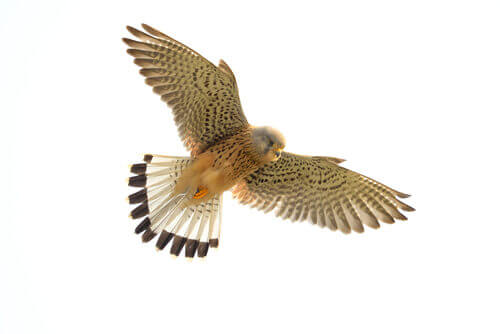All About the European Kestrel

The European kestrel is a daytime bird of prey similar to the eagle. It’s easy to see mainly in peninsular areas of Spain and other European countries. There are approximately 30 thousand pairs of kestrels in places such as the Balearic Islands and the Iberian Peninsula.
Habitat and traits of the European kestrel
Even if the European kestrel lives in the open and in scrubland, it usually makes its nests in rock crevices or buildings, as well as in tree hollows or directly on the ground. Its flight is very showy and acrobatic with a slight glide followed by a very quick flap of its wings to end up perching on poles, trees and perches.
Even if the kestrel comes from Europe, it can be found in Asia and Africa, and lately, it has also been spotted in America. It lives mainly in not very dense forests, cliffs, rocky areas, crop fields, steppes and wastelands.
Differences between males and females
Males and females of this species are well differentiated by their body colors and sizes. The male’s body is considerably larger.
On the one hand, the male weighs about 155 grams (5 oz), has a bluish-gray head, a brown or red body with black spots, and a beige chest and belly. Its tail is gray with a large black and white stripe. The female, on the other hand, weighs about 190 grams (7 oz), and its body and head are brown with spots on its back and tail.
Even though it’s a bird of prey, the European kestrel is much smaller than other birds of prey. As a daytime species, it feeds during the day and rests at night.

Its small diameter doesn’t stop it from being an efficient hunter. This bird is famous for its terrific ability to maintain a fixed position during flight. This helps it locate its prey more accurately.
The kestrel feeds on rodents, birds, reptiles, worms, insects, worms, and frogs. To hunt, this bird uses this strategy of stationary flight, in which it remains almost motionless at about 20 meters high, ready to catch its prey. When it finally sights its prey, the kestrel plunges forward to capture it with its claws and tear it apart with its forceful beak.
The European kestrel’s reproduction
The European kestrel begins its courtship flights in April. The laying of eggs tends to occur at the end of the month or the beginning of the next. Generally, the kestrel chooses to build its nest in rocky areas, hollows, branches of large trees, and even uninhabited nests of magpies.
Every year, the female lays between three and six eggs, usually in the same nest. The incubation period lasts between 26 and 31 days. During incubation, the male has the difficult task of feeding the female. If food is short, she’ll interrupt the incubation.

The white-feathered offspring will be cared for and protected by the mother during the first days of life. After 16 days, the female will leave the nest to go looking for food. Upon return, she’ll place the food at the height of the chicks’ beaks in order to feed them one by one.
After 30 days, the offspring will continue to be fed by their parents. However, they’ll start flying and shedding their white plumage to change it for the colors of their gender. In approximately 2 months, the kestrels leave the nest definitively to live independently. A new stage begins for them.
Migration habits of the European kestrel
The specimens born in the southern areas of Europe live a sedentary life. Those living in the northern areas start migrating towards the end of summer or early autumn, in August and September. They do so during daylight hours and head towards southern Europe and northern Africa.
A curious fact about the North European Kestrel is that it can trade its annual migration for a winter full of field mice in Finland. As we can see, not only the habitat, but also the food can determine whether to migrate or not.
